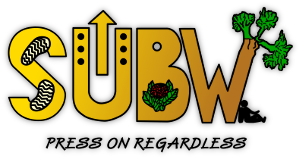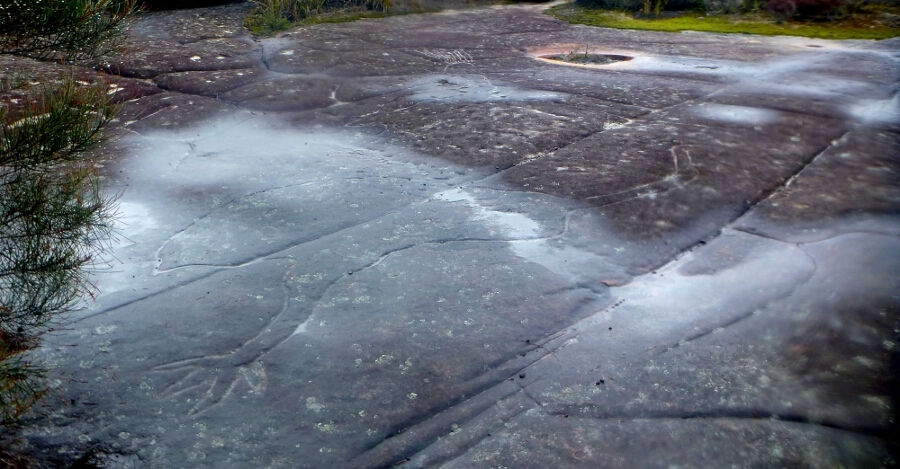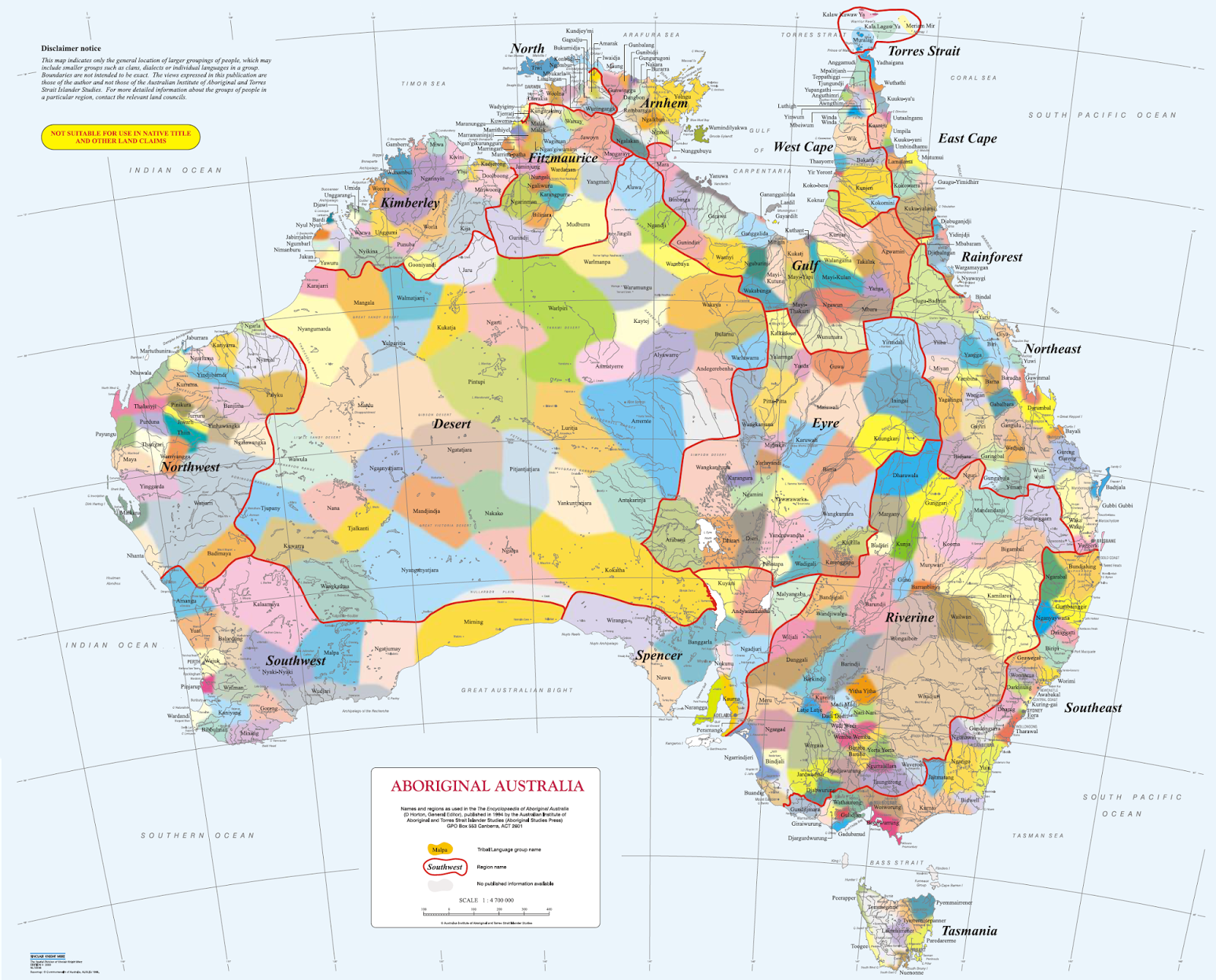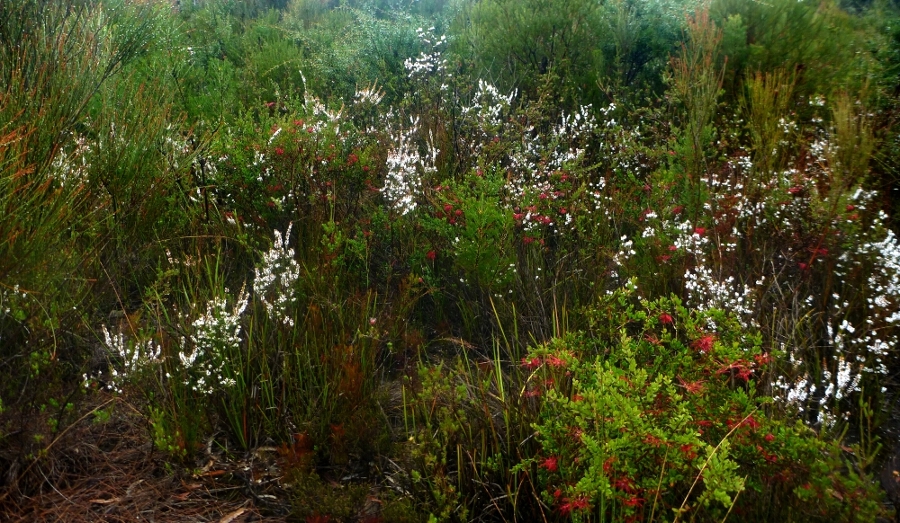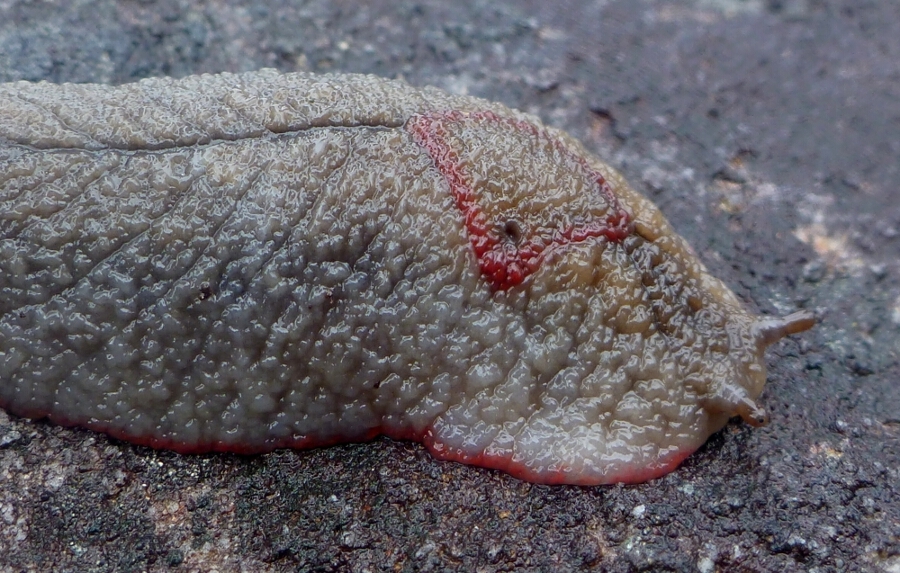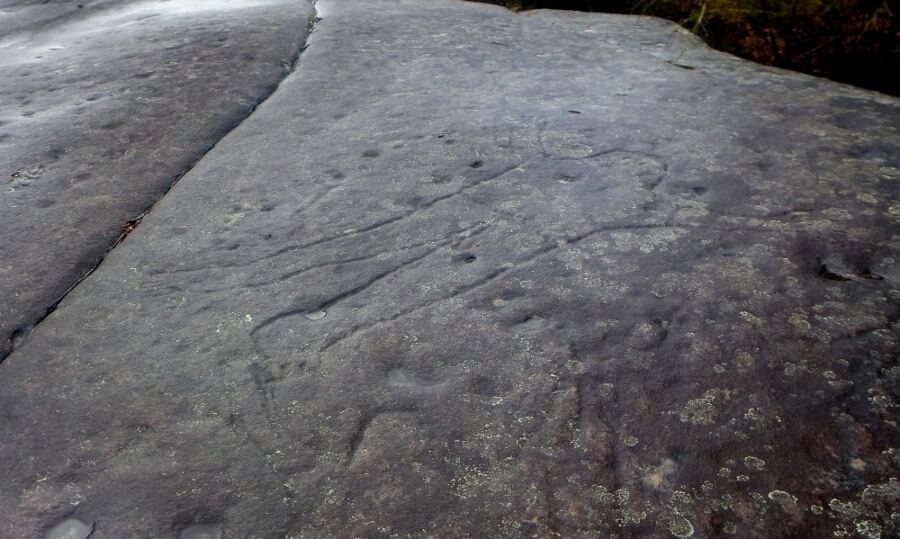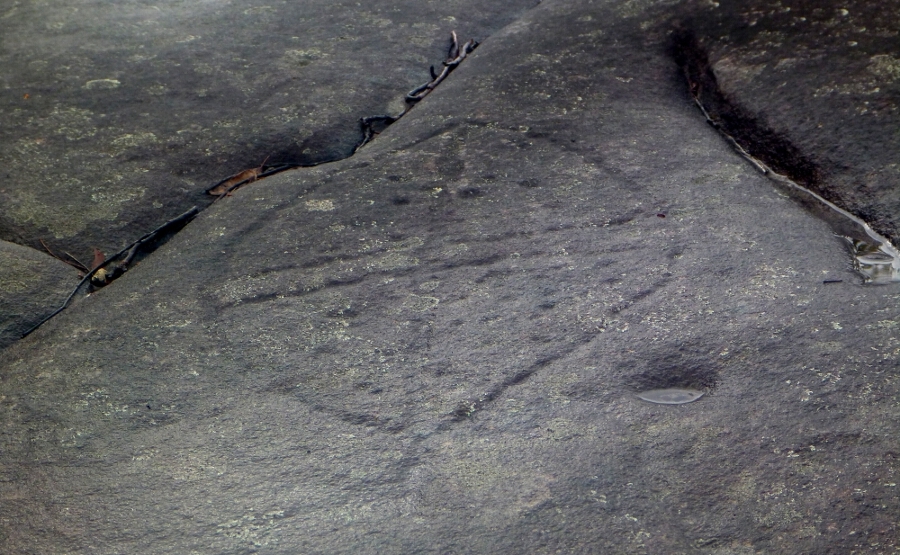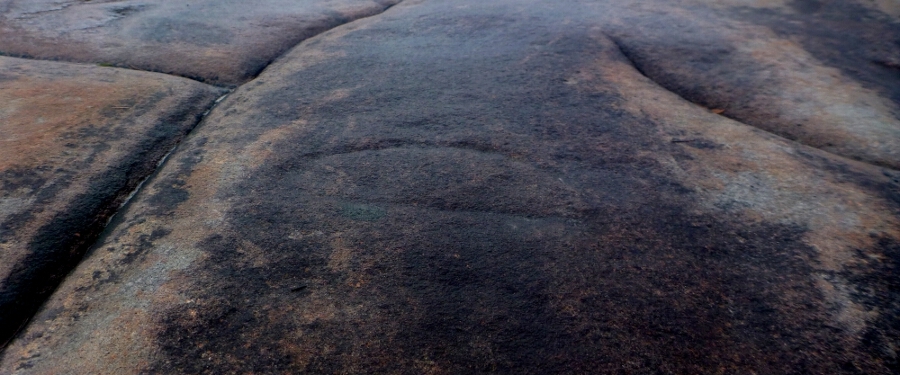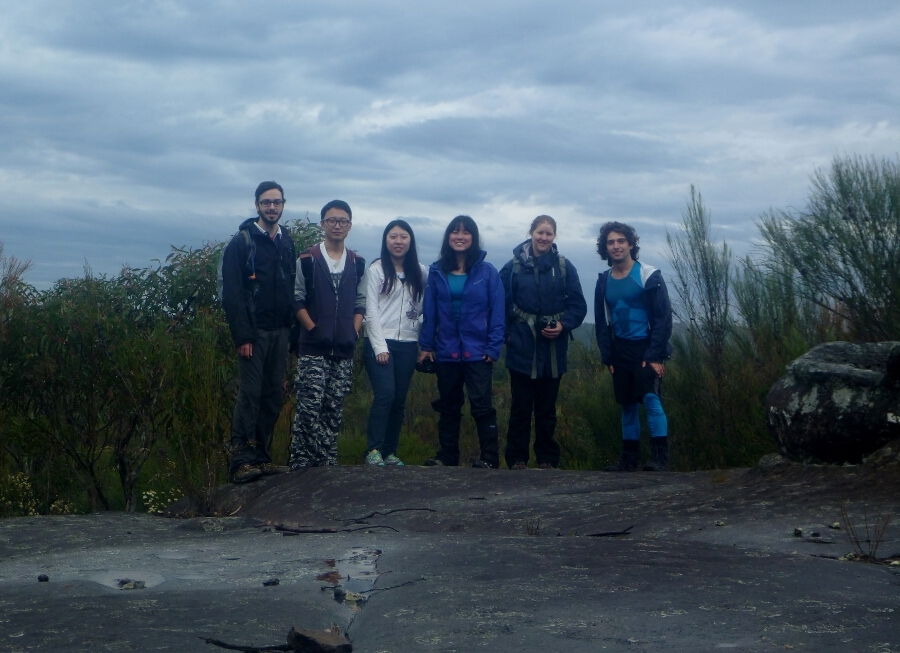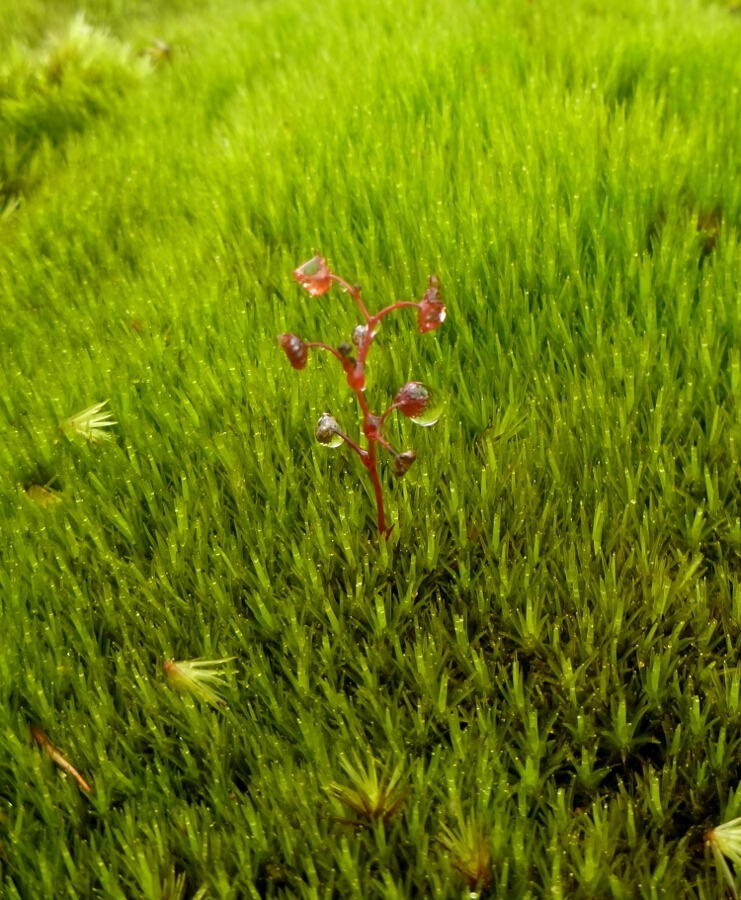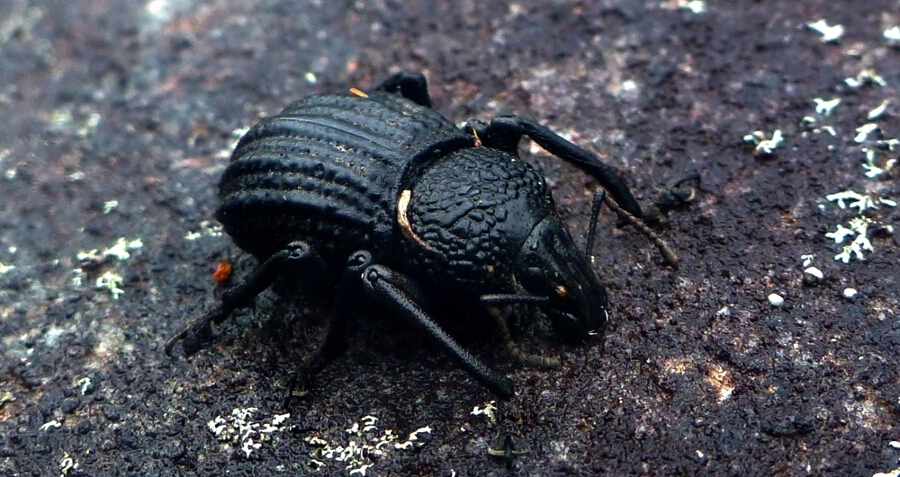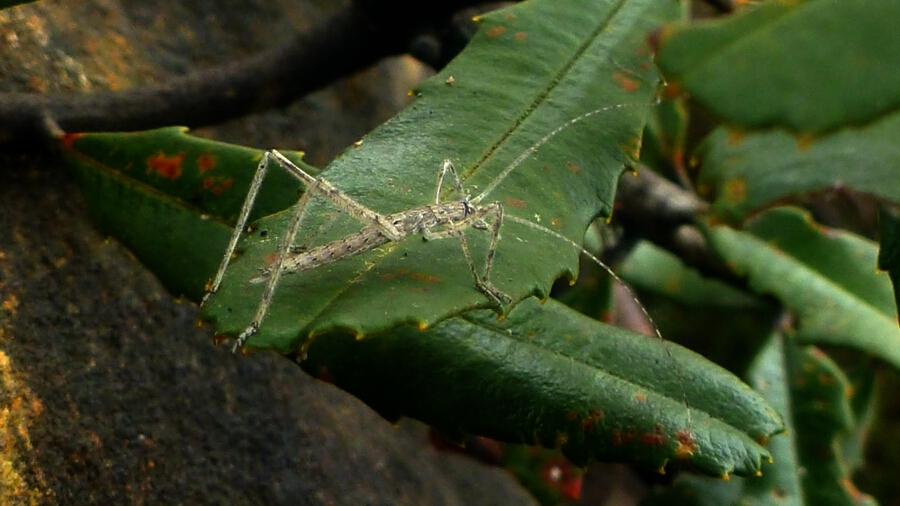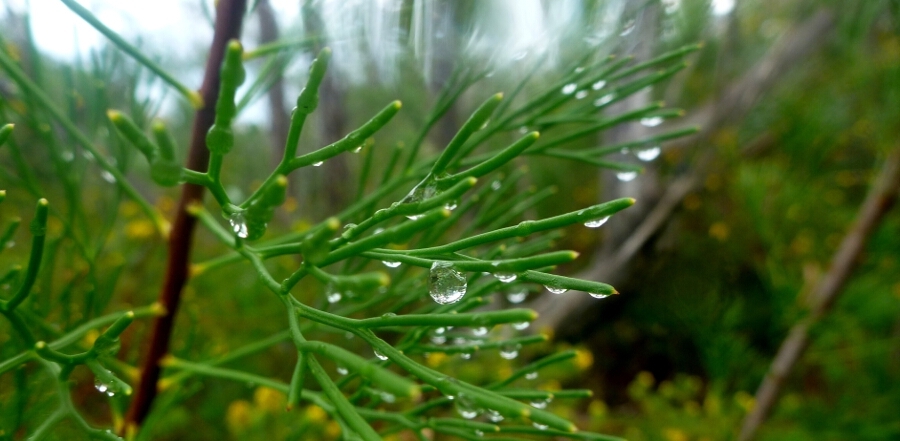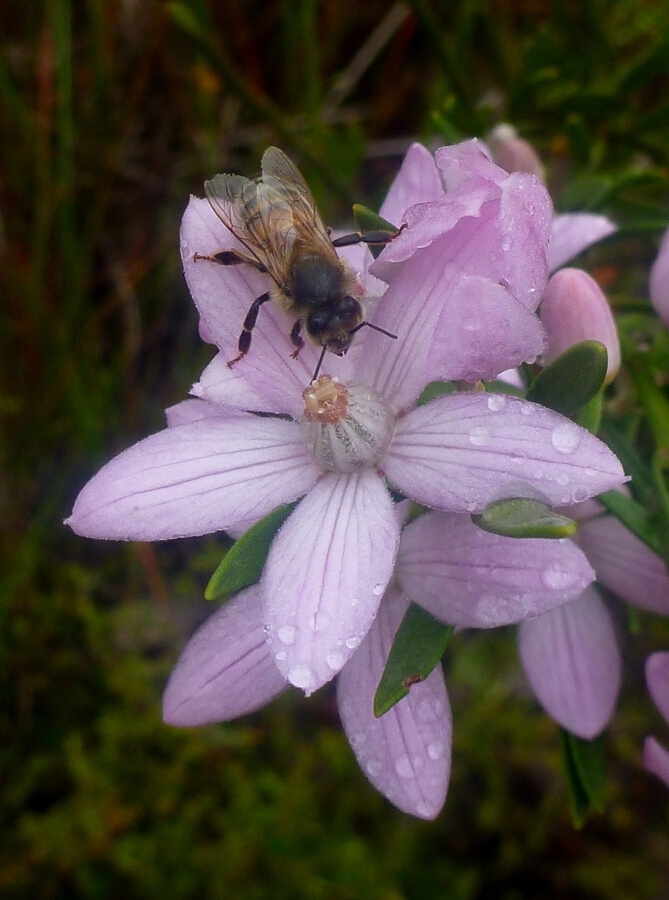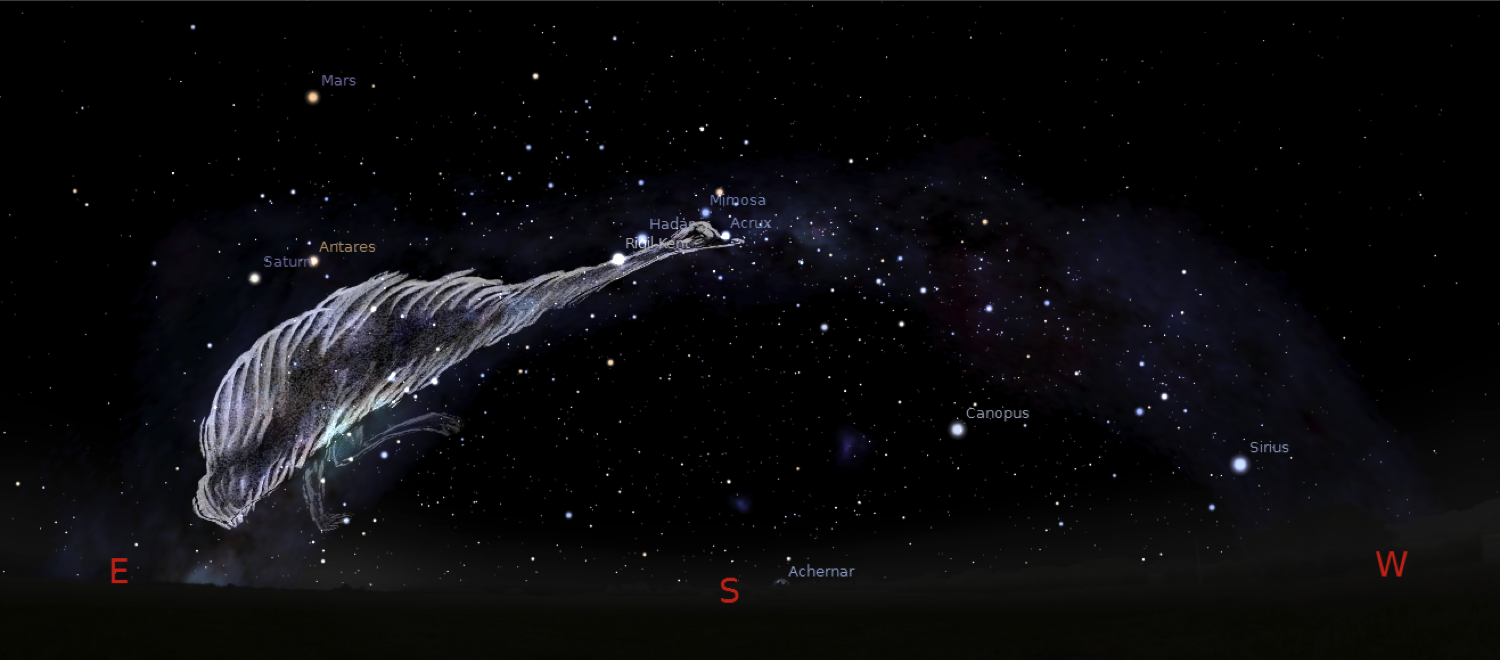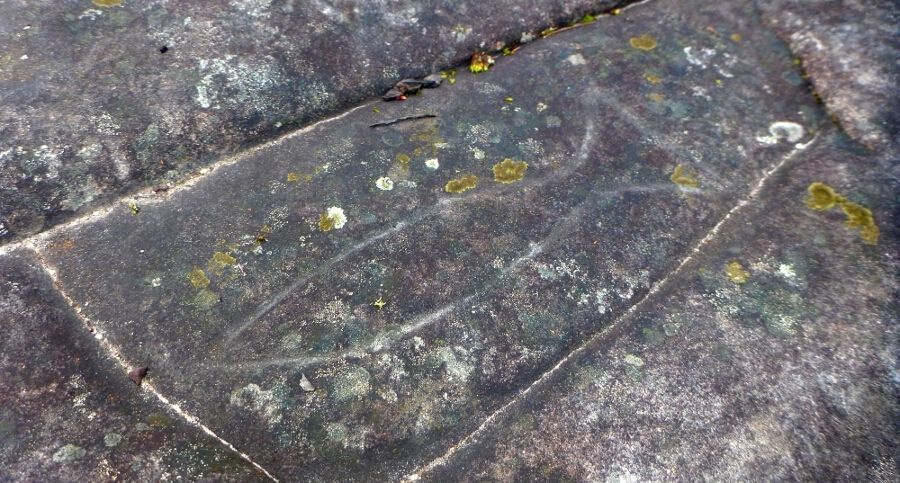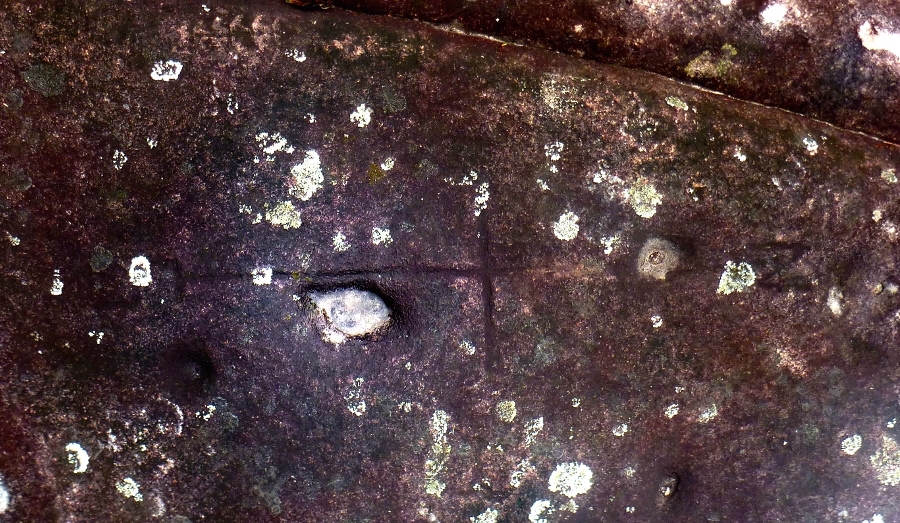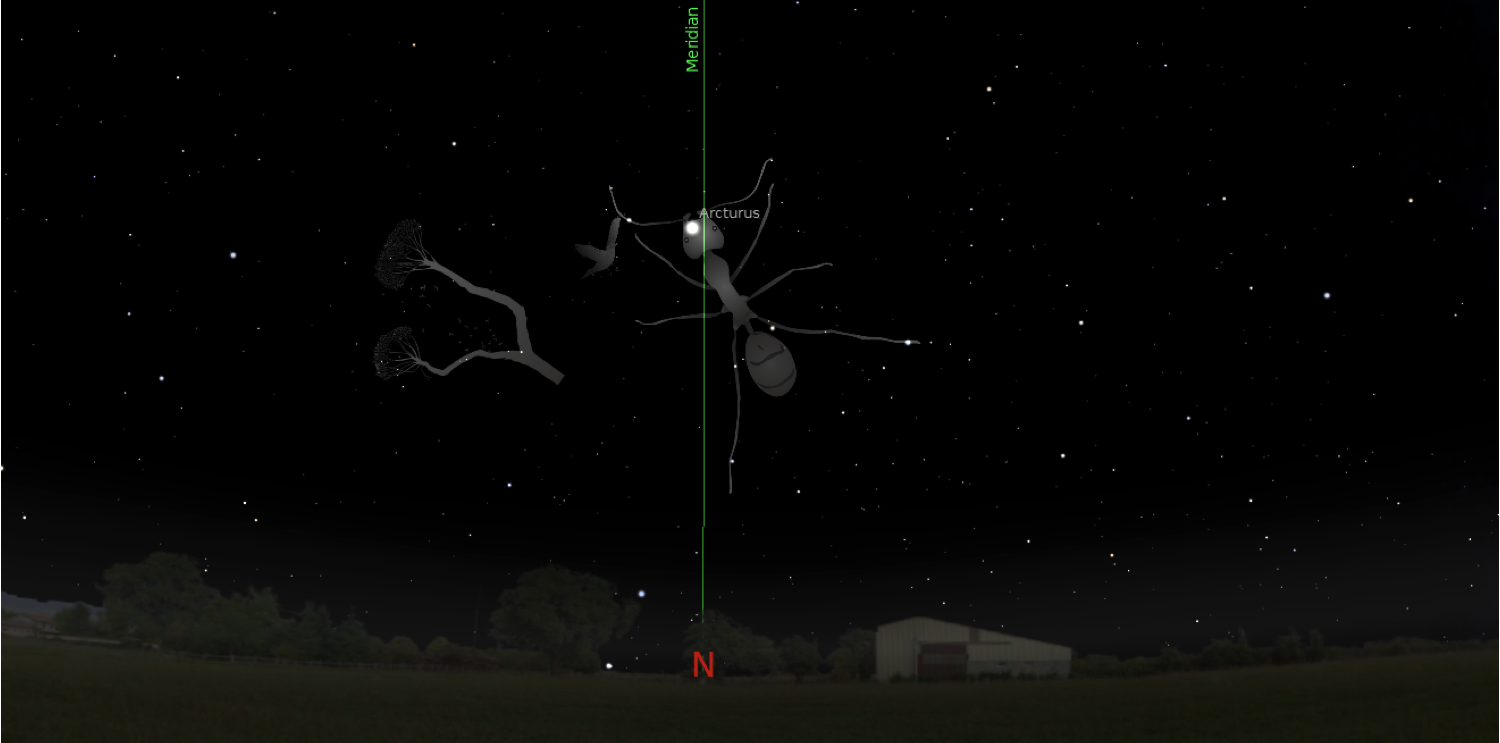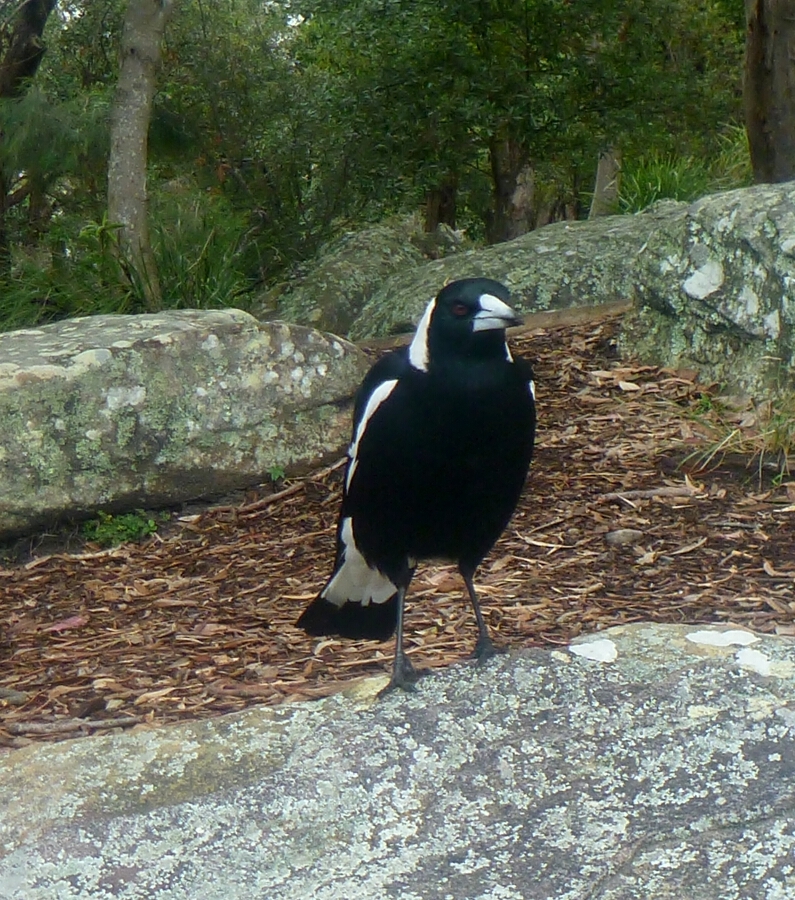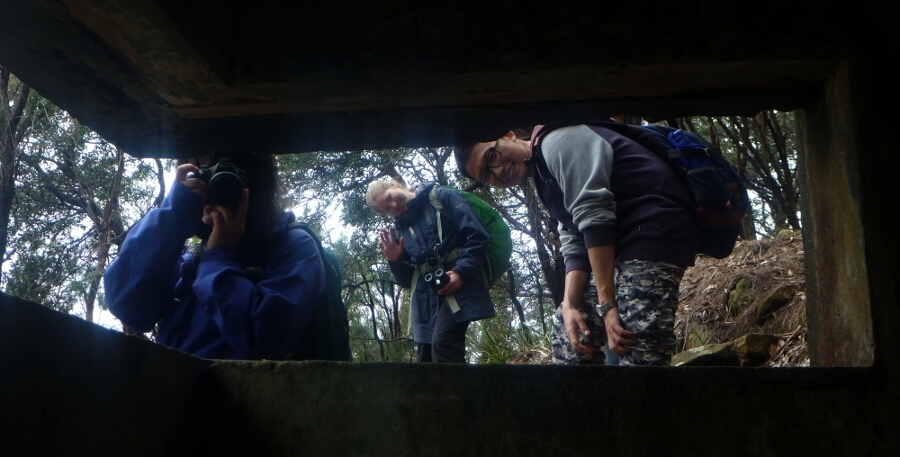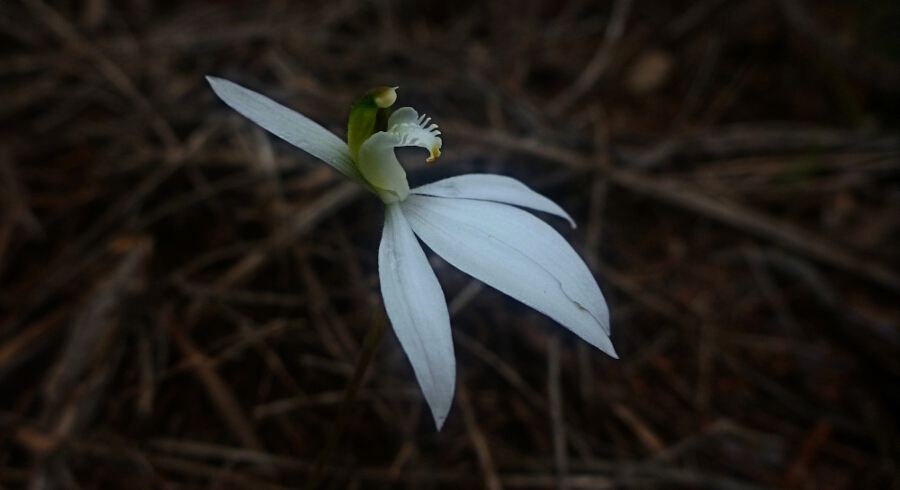Party: Katy, Lilian, Andrew, YiLing, Zhan and Felix
Leader: Felix
Date: 23/8/2015
Credit: Many thanks to Trevor Leaman (from the Nura Gili astronomy team) for his permission in using the star diagrams that appear in this report.
Disclaimer: I have tried to include some additional information in this report. Much if it comes from my memory and notes I have made during a couple of presentations, so there could be some inaccuracies. Furthermore, there where where over 300(?) aboriginal languages and each of these can be considered a separate country, so although there are common threads, they often have their own localised beliefs. Check out this language map!:
A wet-looking-day dawned and I scampered out of bed (glad the start time had been pushed back a bit). I have always liked rain, so with a light drizzle for company I made my way across town to where I would be meeting my chauffeur Andrew.
With nearly half the people already having bailed, I wondered if there would be any more last minute dropouts? but it was not to be! and our party of 6 was soon huddled beneath a bus shelter in Terry Hills for a quick look at some maps. With plans laid, we made a quick dash for the cars (the rain had picked up by this point) and headed to the first site we where hoping to find engravings (after trawling the internet and aerial imagery, I had several locations we should be able to find some engravings).
We pulled up at the track that would take us to our first location to explore. The rain had stopped and a wonderful light was streaming through breaks in the cloud. As we made our way up the muddy track we where overwhelmed by the numerous wild flowers which where also being enjoyed by the birds and other animals – Katy pointed out a New Holland Honey Eater (a yellow bird).
We soon came across some tessellated rock pavements and began searching for engravings. It wasn’t all “heads down” though, as there where some fantastic views! I was definitely excited when we found a cute triangle slug and even more so when we stumbled (gracefully) onto our first set of engravings (the wet rock may have even made them more distinct!).
The first engraving we saw may have been Daramulan or Baiame, both creator-heros from the Dreaming of the Guringai people (who lived in this area).
We thought the second engraving could be a shield or some kind of fish.
As we continued along the rock shelf we found a number of D-shaped engravings – we weren’t too sure what they represented.
There was an abundance of bird life; this time Katy’s keen eye (and binoculars) identified a silver-eye (identifiable by the silver ring around eye) – there are two types, apparently this was the one that migrates to and from Tasmania.
There where a number of critters out, and the rain drops clinging to the flora made for some nice sights.
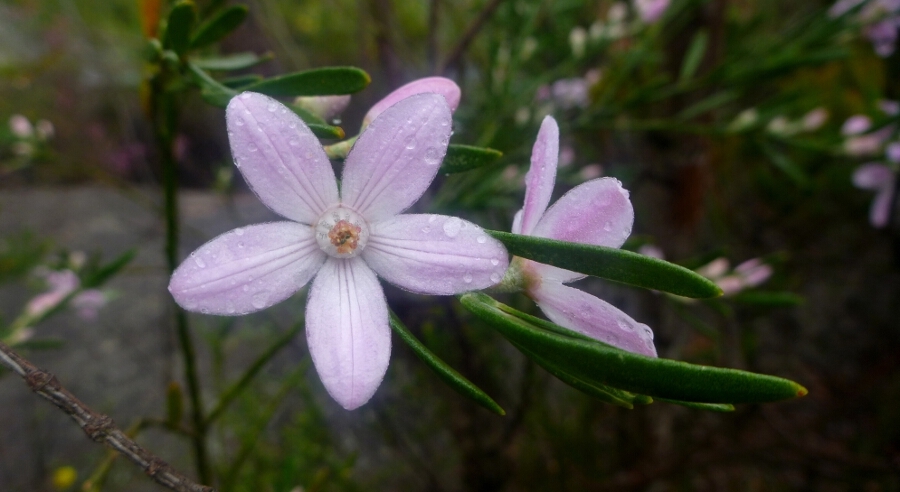
Eriostemon australis (Pink wax flower)
We returned to the cars and continuing past a graveyard of Banksias and Casuarinas (the result of a back burn?) and arrived at our next location where we where hoping to find a large engraving of an emu. Something special was noted about this particular engraving in that it didn’t look very like a real emu but rather resembled the “emu in the sky”.
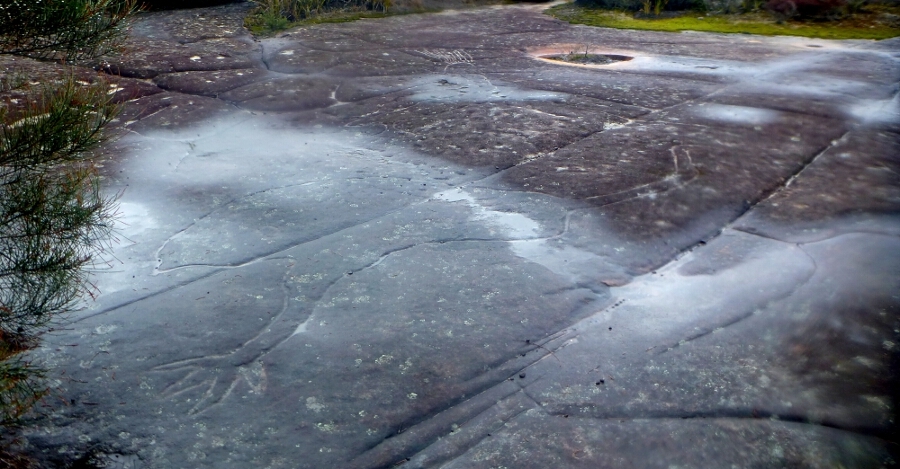
In “Western astronomy”, constellations are important. For aboriginals, single stars are often important as well as the dark spaces between the stars: the head of the “emu in the sky” head is formed by the Coalsack absorption nebula, with its neck, body and head stretching out across darker sections of the Milky Way.
“In Victoria, Wergaia clans called the emu Tchingal, while the Mara called it Torong. The “emu in the sky” is known across Australia, from the Kamilaroi of New South Wales, to the Meintangk of South Australia, to the Larrakia of the Northern Territory.”
Interestingly the same emu is known in South America, but is instead referred to as a “llama in the sky”. “The Inca revered the llama, which can be seen as a very similar shape to the emu in the sky”. “In Bolivia, this … [shape] as a rhea (a bird very much like an emu or ostrich)!”
The imortant thing about the emu engraving we where looking at was its orientation. It is now thought that the Guringai used the position of the “emu in the sky” to measure the emu’s breeding cycle (a kind of food calendar – Emu eggs where an important food source for aboriginals).
If the emu is facing up, it is mating time and the emu’s will be pairing up, it it is more horizontal (this is the orientation of the engraving) the emu’s are sitting on the eggs, and it is a good time to harvest them. If the emu is facing down, it is too late 😉
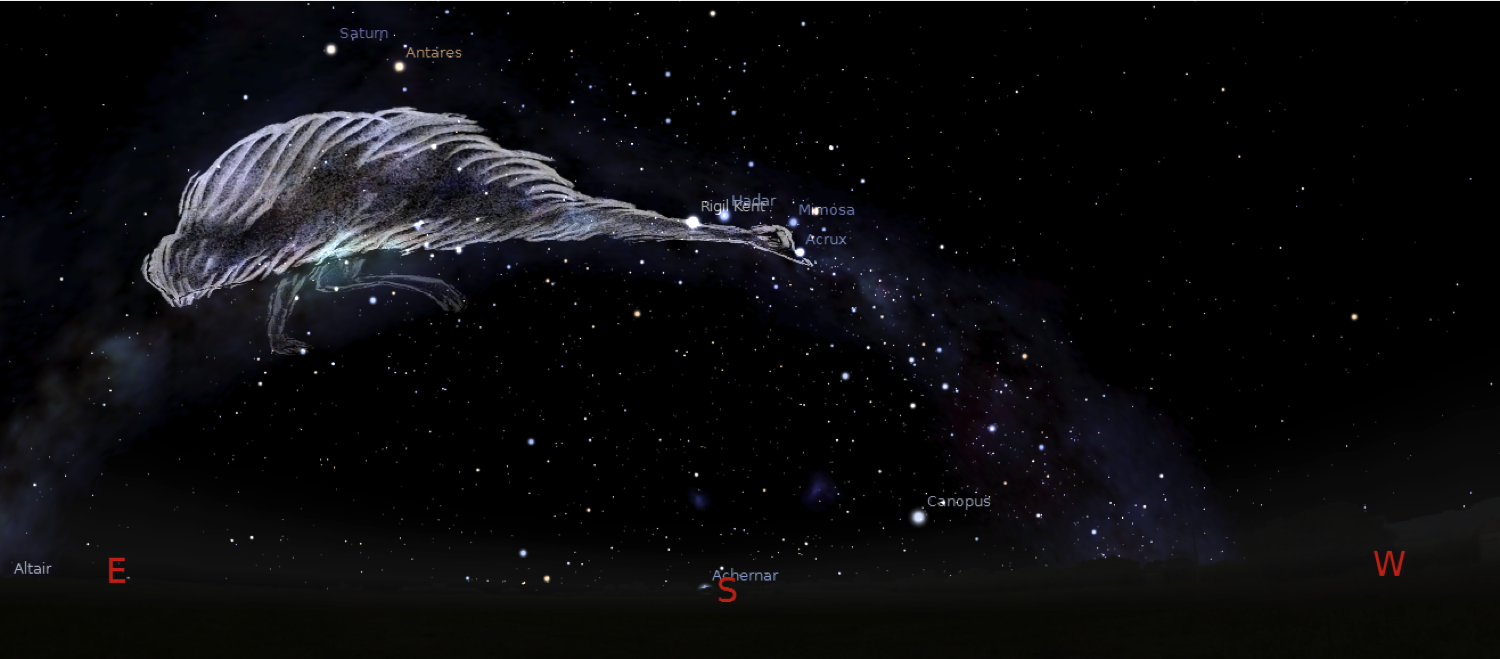
June – July = Sitting on Nest (on eggs)
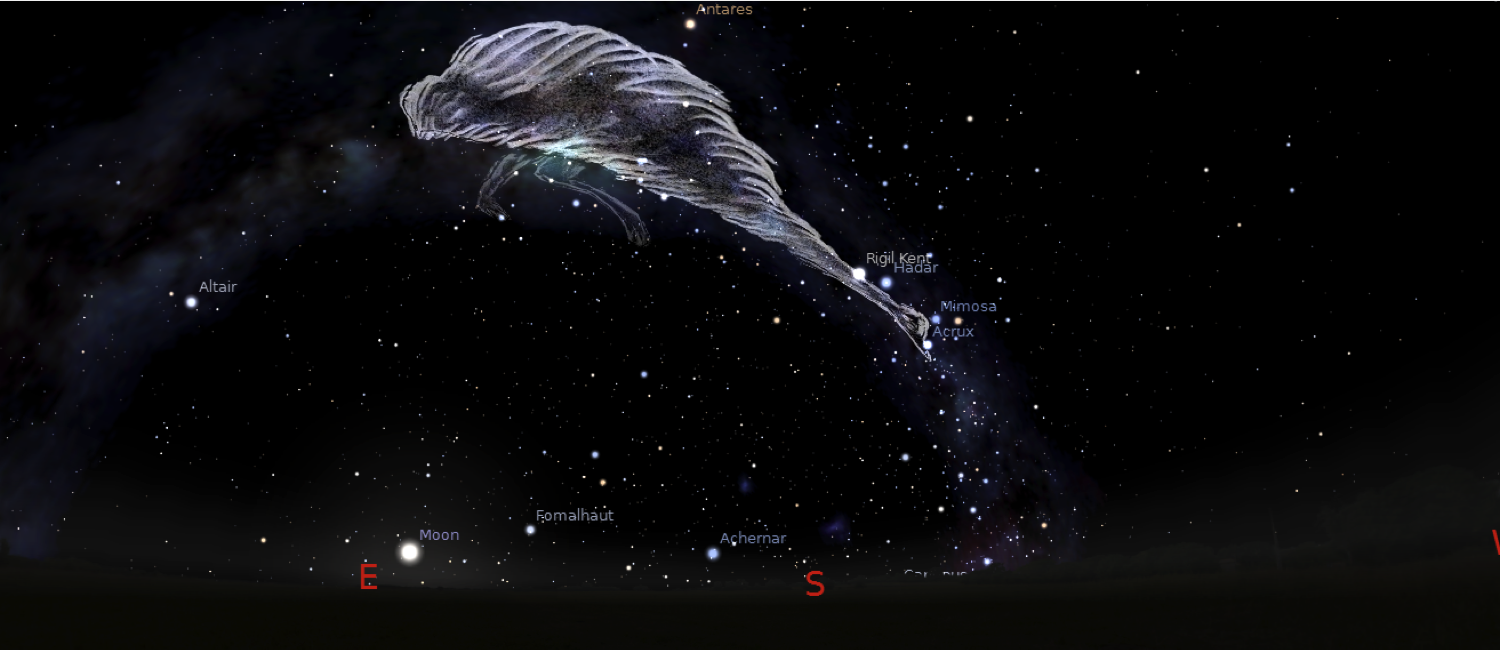
August = Too late to collect eggs!
There is another orientation that may also hold significance. If the emu is facing vertically down, it marks when the Bora initiation ceremony occurs.
The dark patches in the sky emu is (perhaps) reflected in the physical construction of the ceremony.
Another link is the male emus who sit on on the eggs, nicely reflecting the boy’s Bora (initiation) ceremony.
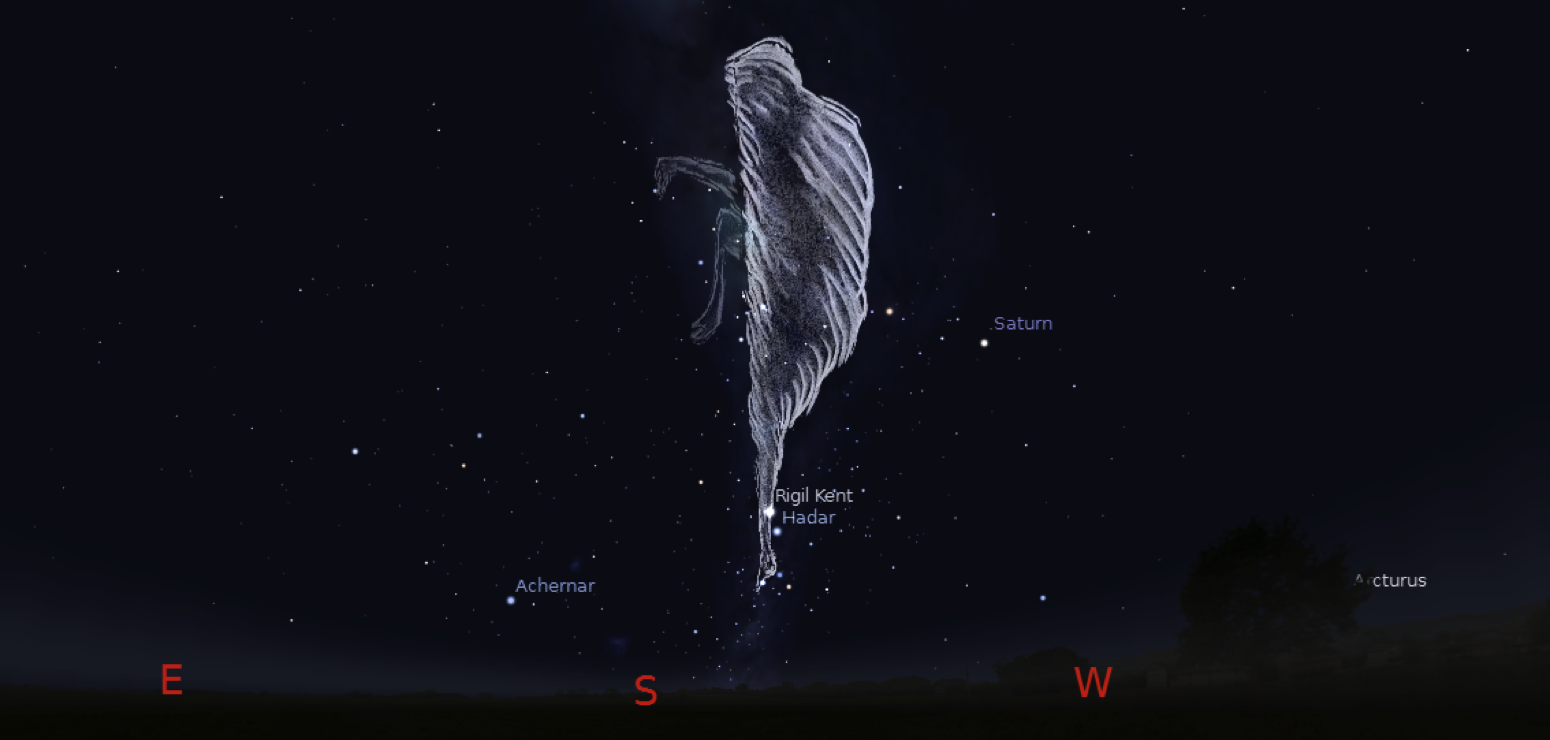
Another aspect is a cultural aspect – (around September) – Bora initiation ceremony (boys into men)
There are other examples similar to this, for example when the “7 Sisters” (Pilades) rise just before sun rise it signifies the migration of the whales and the start of the dingo breeding season.
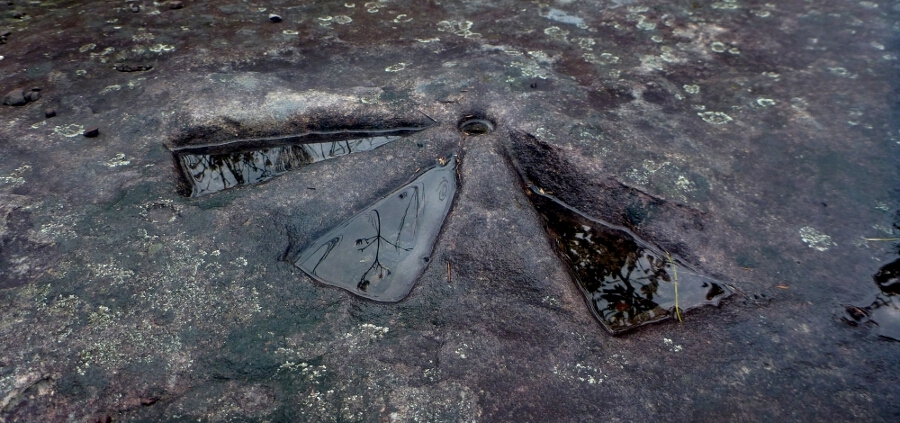
Not sure what this one is supposed to be…
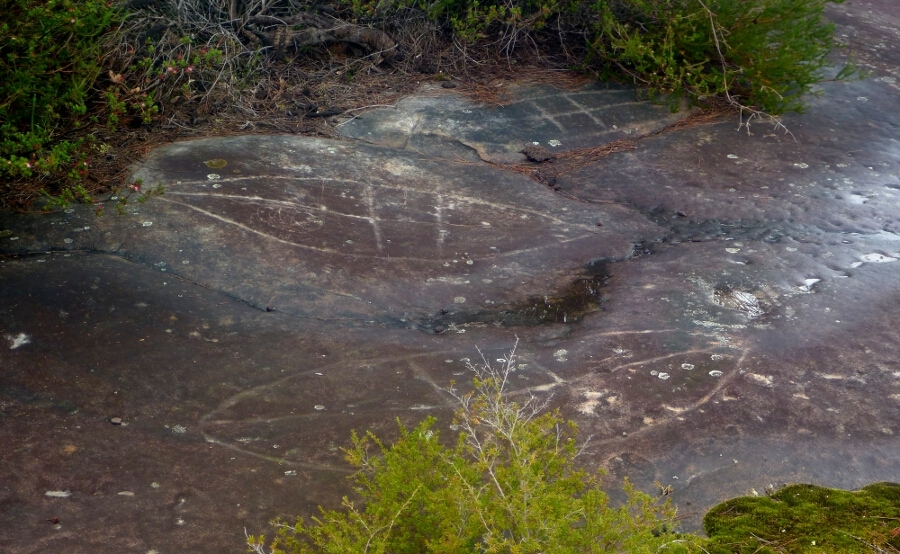
Evidence of “highlighting” is quite evident in this engraving. This involved the “gentle removal of dark organic material from the groove profile.
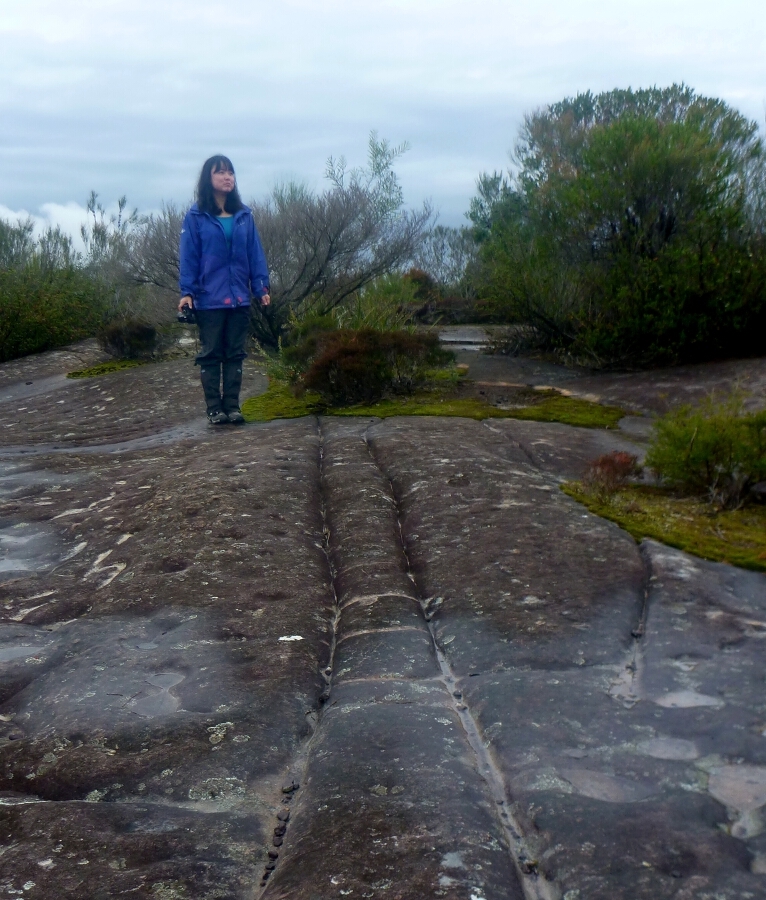
We thought that these engravings may have represented snakes.
Another engraving we came across (probably not of aboriginal origin!) was a compass rose, with the north and south letters also engraved.
On a recent SUBW trip I learnt that you can actually use the stars to find the southern celestial pole by drawing a line through the long axis of the Southern cross and intersecting this with a line drawn perpendicular from the midpoint of the Pointer stars (Alpha and Beta Centauri).
I wonder if the aboriginals used something similar? There is a story (one of the oldest recorded) that suggests they aligned a star up with North as a food indicator for bittur…
A long time ago, the Boorong people where struggling through a severe drought. It was the worst they could remember, and the lack of water and food meant that people where starving. One day a wise woman by the name of Marpeankurrk was out foraging. Whilst sitting down exhausted from her fruitless efforts, she noticed some ants marching into the bush. She wondered where they might be going? She followed them to where they disappeared into the Earth. Curious, she dug up the nest and discovered bittur (ant larvae). Desperate for food she shoved some into her parched mouth and slowly felt the energy strengthening her body.
When Marpeankurrk passed away she was placed in the sky. The star has a reddish colour (a reflection of ant’s colouring) and is the fourth brightest in the sky. Even as a star she continued to show the people when they could find bittur, appearing in the night sky along the northern meridian when the time was ripe.
After some story telling we moved on again. Walking down this new track, Katy pointed out the edible blueberry ash. Lillian and I both tried some of the tasteless berries. We also discussed the identification of the angophora. The day before I learnt that the seeds have ridges on them, today I learnt that the leaves grow opposite to each other as opposed to alternating!
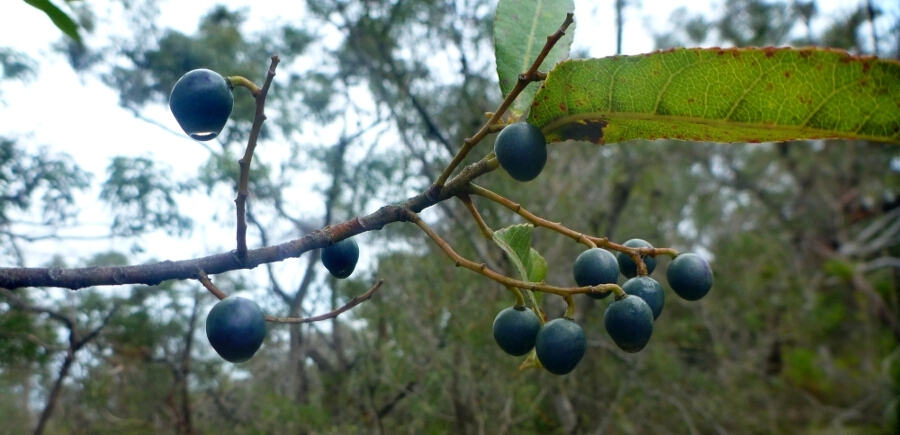
Blueberry Ash (Elaeocarpus reticulatus)
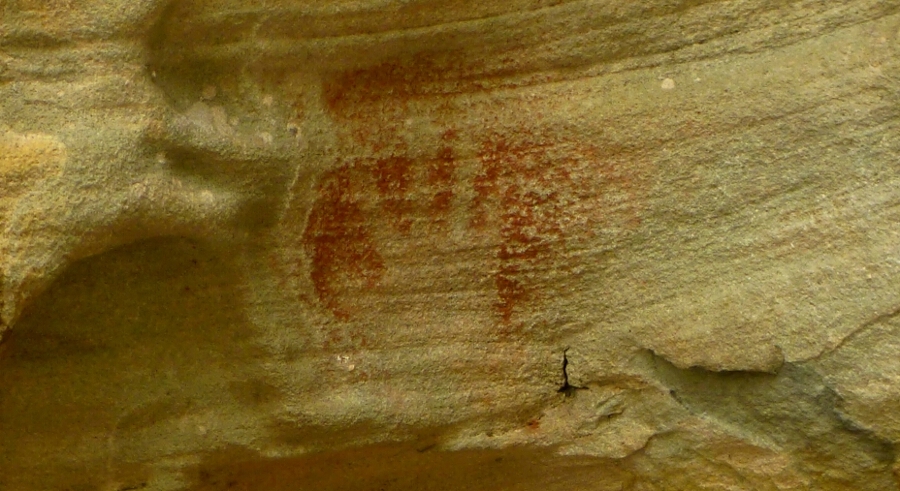
Aboriginal hand stencil in Red Hands cave
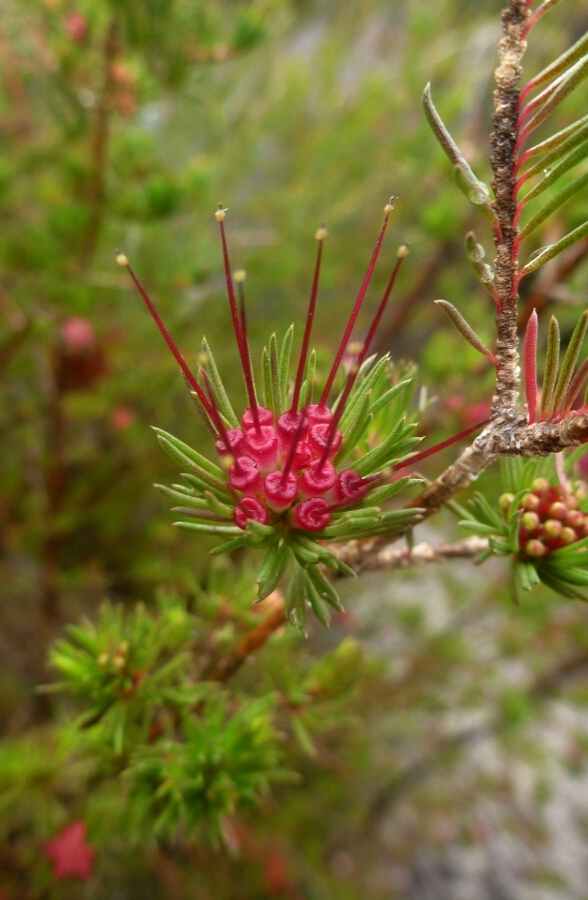
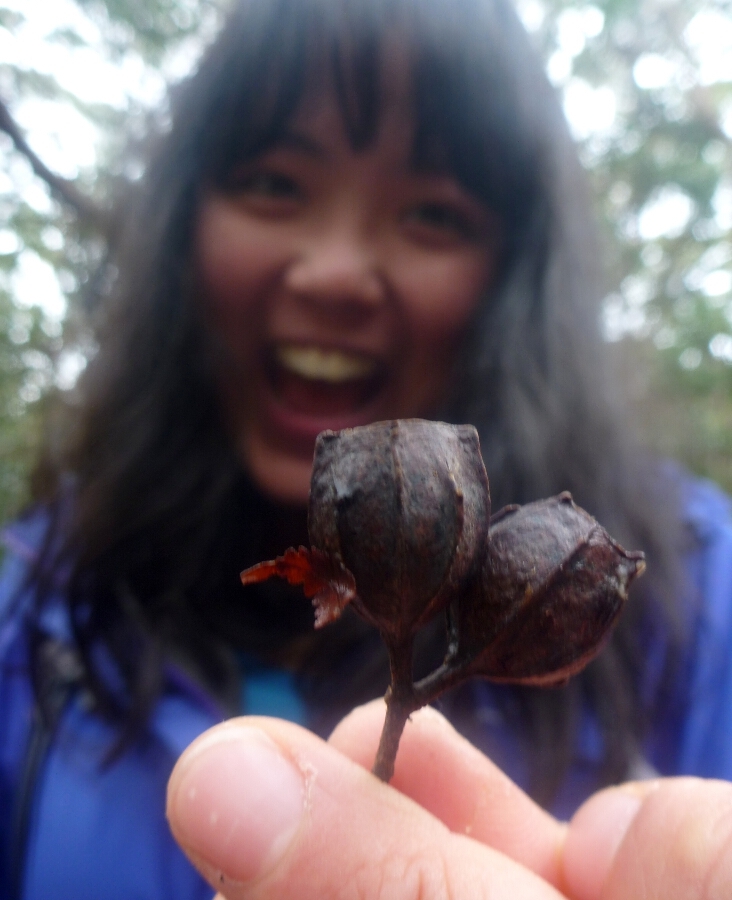
(left) unidentified flower, (right) Lilian excitedly noting the ridges on the angophora seeds 😉
We continued on to a panoramic lookout which would be the ideal spot for lunch. We admired the view whilst listing to the birds (including a kookaburra) and keeping a watchful eye on a fat, overly friendly magpie. Up in the sky we watched a white belly eagle gliding through the sky.
Zhan produced a packet of duck tongues which everyone (apart from myself) was brave enough to try.
After lunch we crossed a small creek and visited a small secluded beach. Continuing around the peninsula the track meandered though some Sheoaks – I recall asking what the difference between a Sheoak and casuarina was 🙂 and came across an old gun emplacement (looking on the aerial imagery later I noticed quite a lot of these).
On the final stretch back to the cars we passed more engravings as well as a white orchid.
Caladenia catenata (also known as White Caladenia or White Fingers)
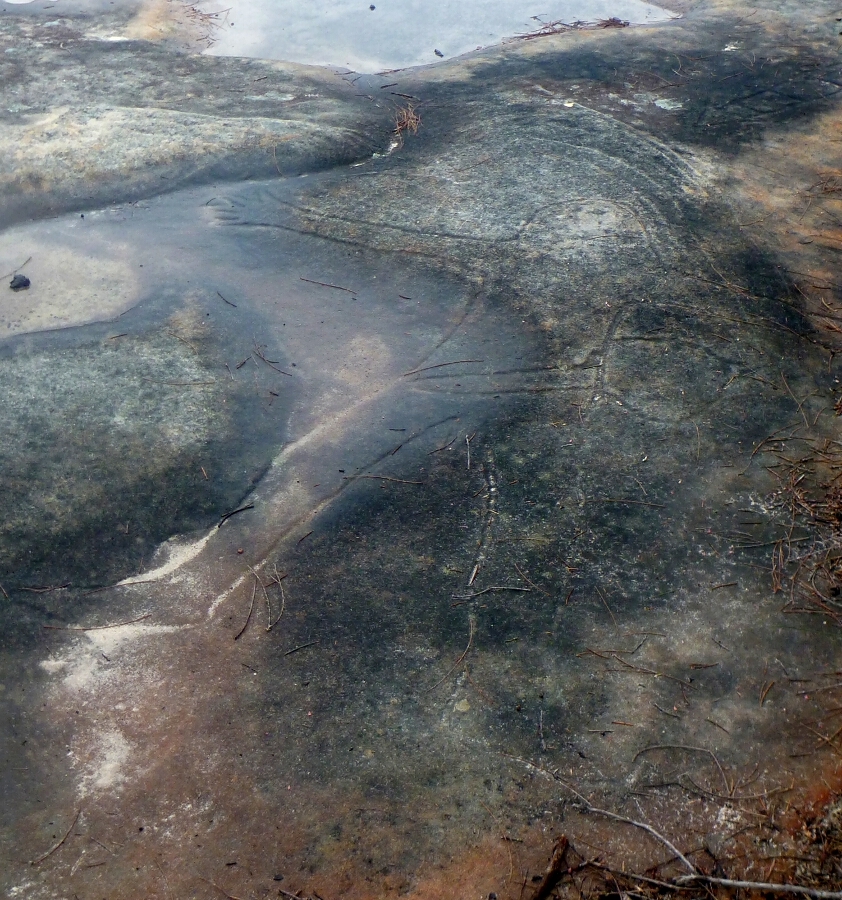
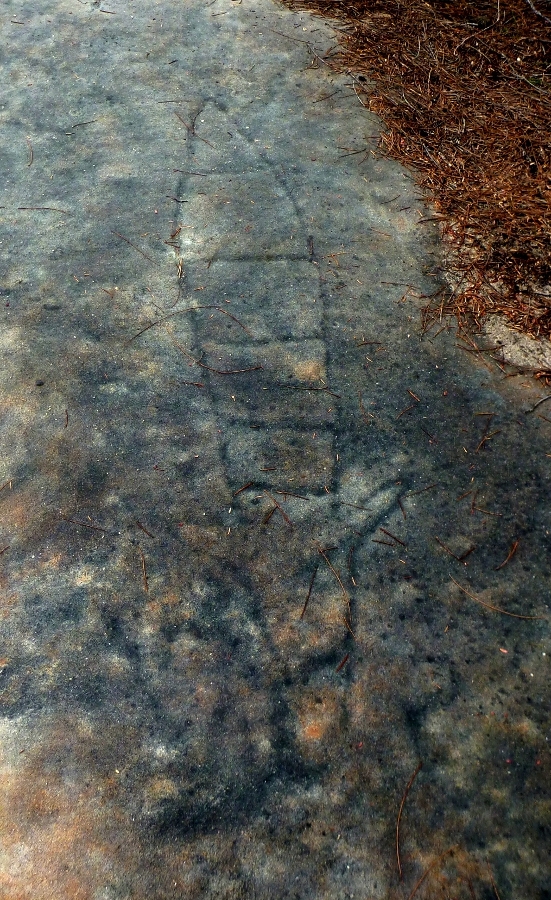
(left) an engraving possibly of Daramullan or “Biami”. Maybe holding a club?, (right) an engraving of an eel.
We discussed doing a bit more walking, but in the end decided it was a good time to finish the trip; besides we didn’t want to test our luck with the rain too much.
On the way home, our car listened to some sweet Supertramp!
Thanks everyone for a fun trip! I think it was YiLing’s (and Zhan’s??) first club walk. Hope to see you again!
Felix
